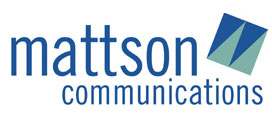Even as America continues to struggle with COVID-19 and its economic fallout, trade media and business reporters covering your industry are eager to publish your company’s news and leadership insights. Six months into the U.S. reporting of the coronavirus crisis, journalists are especially interested in publicizing stories about how your company has adjusted and what your firm’s leadership is doing to refashion the business. Trade press outlets that cover your industry want to highlight what your company expects to accomplish for the balance of this year and into 2021. It remains vital for your business-to-business communications and public relations program to showcase how your business is managing, what the company is accomplishing and what is the business outlook post pandemic.
Your business-to-business messaging and content development need to properly reflect how your company continues to serve its customers and communities. Even if your new business and sales pipeline is on hold right now or your market outreach opportunities have been canceled or postponed, your target business audiences still want to hear from you.
Our goal for any business-to-business communications project or public relations program we pursue on behalf of our clients is twofold:
1) continue to secure positive press coverage across all media targets
2) strengthen the brand and promote new business development via participation in social media outlets
I encourage you to share some good news, insights, business initiatives and industry expertise with your top media targets. Following are suggestions for how to optimize your business-to-business communications.
Communicate Your Expertise
Your competitive advantage is your business expertise. Communicating your industry expertise through the trade and business media is a great way to promote your brand while adding value to your business audiences. If your company is closely monitoring industry trends or has specific guidance you would like to share, we can help you develop and publish feature stories to inform your clients about how to best manage their assets in this environment.
During this difficult environment, Mattson Communications has developed many industry expertise articles for our clients. For instance, we drafted and published this byline article to showcase our client’s industry expertise as their commercial real estate borrowers and investors were starting to feel the effects of the coronavirus crisis on their retail properties.
Shine a Spotlight on Your Customers
A great way to show how your business is effectively partnering and working with its clients is to publicize customer success stories. Even if your business has had to postpone some of its activities or transactions have been put on hold, you can still showcase how your business proactively supports its clients.
Take the example of this customer success story, which we developed to shine a spotlight on our client’s industrial automation exhibitors and bring attention to their remote manufacturing solutions. When you can’t meet face-to-face with your target audiences, publicly communicating your support for them is a safe way to frame what your business contributes to your target audiences and spreads good will during this time of crisis. This contribution will not be forgotten by those customers.
Share Some Good News
During the COVID-19 era and beyond, journalists are eager to print good news that will inform and add value to their readers. Now is a good time to share some good news about innovations and product offerings that will be meaningful to your client base and your industry as a whole.
Taking that into consideration, we worked closely with a SunTrust CRE HUD loan originator to develop and publish this good news byline article. Outlined in the story are descriptions of current HUD financing programs geared towards affordable and market-rate multifamily property investors.
Offer insight on The State of Your industry
We are honored to work with clients who offer a platform for new technologies across a variety of business segments. Although we developed the following article prior to the pandemic, this state of the industry overview showcases how smart technology offerings are addressing critical issues such as maintenance and downtime in the commercial trucking marketplace.
Kathy Zoeller is founder and president of Mattson Communications, which is known for its strategic assessment of clients’ PR needs and for executing business-to-business communication programs that generate superior results. Kathy can be reached at 312-485-2422 or kathy@mattsonpr.com.

 by Kathy Mattson Zoeller, published in Bacon’s mediamap.com
by Kathy Mattson Zoeller, published in Bacon’s mediamap.com